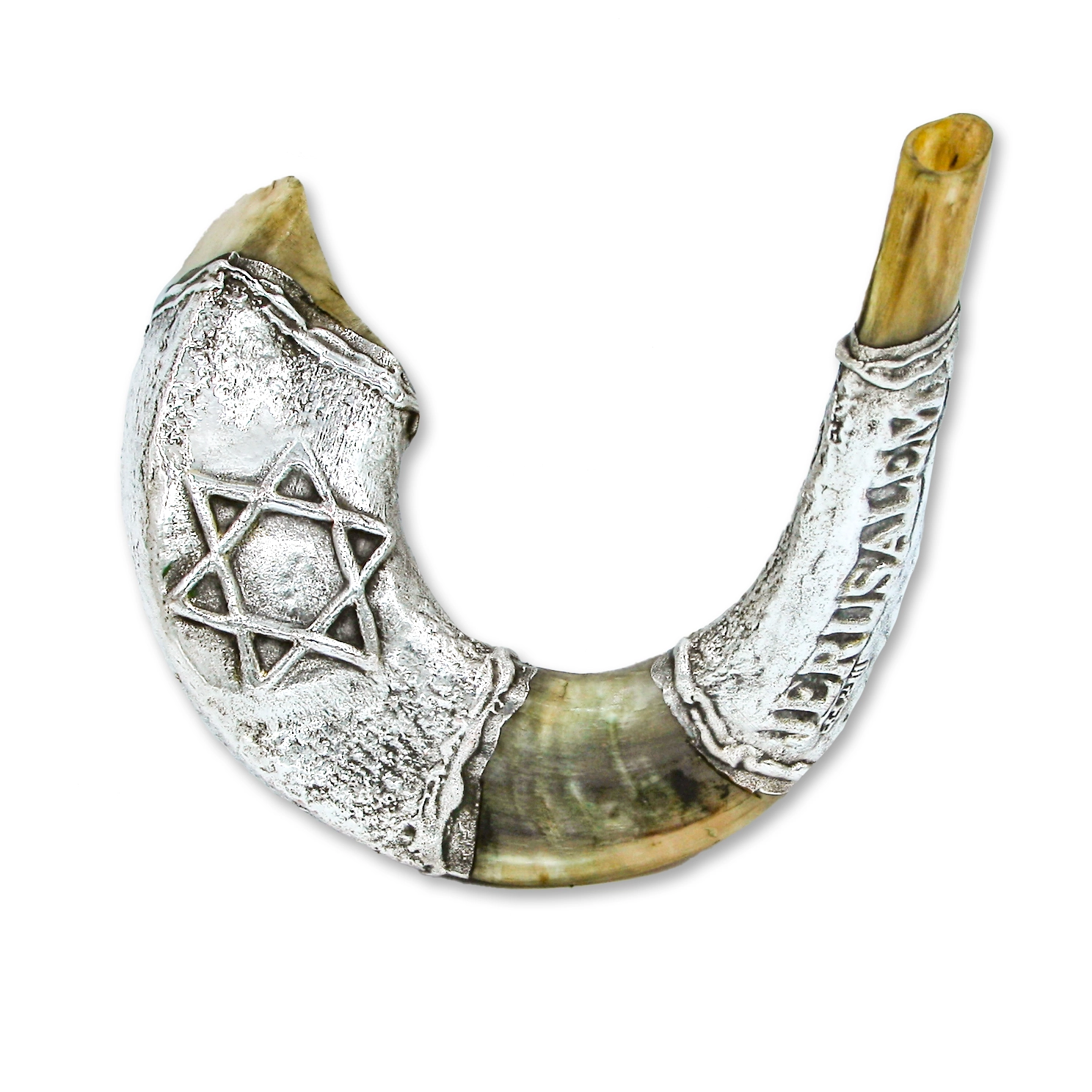Description
Length – 47.5cm 18.7″
Shofars are usually made from Rams horn or Antelopes horn.
The Shofar has been used from Old Testament times and even to the present. It is an instrument usually made from a rams horn. It was blown on the Sabbath, it announced the New Moon, and was used to proclaim the crowning of a new king, It was also used to lead the people of Israel into battle. The most significant modern use of the Shofar is during the holiday of Rosh Ha’Shana.
In modern day Israel, The Shofar is used mainly on Rosh Hashanah and Yom Kippur. It is blown in synagogues to mark the end of the fast at Yom Kippur, and blown at four particular occasions in the prayers on Rosh Hashanah. During the blowing of the shofar on Rosh Hashana, there are three distinct sounds:
- Tekiah– one long, straight blast
- Shevarim– three medium, wailing sounds
- Teruah– 9 quick blasts in short succession
In English, the word trumpet appears many times in scripture and many times it is referring to the ram’s horn (“Shofar”) as opposed to the “Chatzotzrah,” a long, straight trumpet made usually of silver or gold. At Mount Sinai when the Jewish people received the law of Moses, it was accompanied by several miraculous signs (Exodus 19:16) among which was the shrill blast of a “shofar” that emanated from the sacred mountain. Later on when Joshua led the Israelites in the siege of Jericho, it was the blast of the “shofars” (Joshua 6:20) that triggered the collapse of those impregnable walls. Still later, in the time of Gideon, it was a band of only 300 men (Judges 7:15-23) which at God’s command scattered the mighty Midianite army of 120,000 by smashing pitchers and blowing “shofars.”
A “shofar” is a curved horn taken straight from a male sheep commemorating the sacrifice of Isaac when at the last moment God provided a ram that had its horn caught in the thicket. Horns of cows were rejected because these animals were associated with the worship of the Golden Calf by the Children of Israel in the desert, a sin vigorously condemned by Moses. The “shofar” blown at the Feast of Trumpets (“Rosh Hashanah”) (Leviticus 23:24) marks the start of a 10 day period of spiritual self-examination and repentance, which culminates with “Yom Kippur,” the Day of Atonement. Longer “Yemenite” shofars are made from antelope horns.






